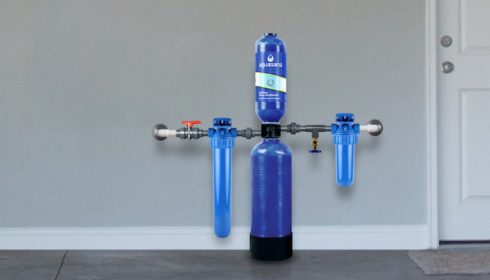There’s something deeply personal about water. You drink it, bathe in it, cook with it, and clean with it — every single day. It’s the quiet backdrop of your life, shaping moments you barely think about: that first sip of coffee in the morning, the way your skin feels after a shower, the sparkle of a freshly washed glass. But the truth is, not all water feels (or tastes) the same.
Some days, it smells faintly metallic. Other days, it leaves a film on your dishes or a dry feeling on your skin. And then there’s the worry — the question no one likes to say out loud: what’s really in my water?
That’s where modern home filtration comes into the picture — not as a luxury, but as a quiet act of care for your home, your family, and, honestly, your peace of mind.
The Bigger Picture of Water Quality
It’s strange how we’ve come to assume that tap water is automatically “good enough.” Sure, it’s treated and regulated, but between aging pipes, agricultural runoff, and lingering industrial waste, a lot can happen between the treatment plant and your kitchen sink.
Chemicals, sediments, and microscopic contaminants — many of which you can’t see or smell — can slip through unnoticed. That’s why homeowners across the country are rethinking the idea of clean water altogether. It’s no longer about whether your tap runs clear, but whether it’s actually safe and healthy.
That shift in mindset is what’s driving the rise in whole house filtration systems. Instead of dealing with water issues room by room — like adding a little filter to your sink or shower — these systems protect your entire home. Every faucet, every showerhead, every appliance gets the benefit of cleaner, balanced water. It’s like giving your house a permanent upgrade that works silently in the background, day in and day out.
The Hidden Contaminants No One Talks About
We’ve all heard about lead or chlorine in water, but modern testing often reveals more complex culprits — compounds with names that sound like they belong in a chemistry textbook. PFAS, nitrates, microplastics — they’re small, but they matter.
PFAS, in particular, have become a huge public concern in recent years. Often called “forever chemicals,” they’re used in everything from non-stick pans to packaging and firefighting foam. Once they enter water sources, they don’t easily go away. The long-term exposure risks are serious enough that many health organizations are now calling for stronger filtration standards.
And it’s not just PFAS. There’s lead from aging infrastructure, cysts from microorganisms, and other dissolved solids that can sneak into your water unnoticed. That’s why some of today’s most advanced systems focus on pfas lead cyst reduction — targeting those invisible threats with specialized filters that go beyond what city treatment plants can do.
It’s not fearmongering; it’s just the reality of modern living. Water that’s technically “safe” might still not be as clean or balanced as you’d want for your family.
When Taste Tells a Story
Let’s be honest: water should taste like… well, nothing. But so often, it doesn’t. There’s that faint chlorine scent, that odd metallic edge, or even a hint of sulfur that makes you wrinkle your nose when filling a glass.
The truth is, taste tells a story — one about what’s hiding in your pipes or local water supply. It’s not always dangerous, but it’s rarely pleasant. Chlorine, for example, is great at killing bacteria, but it also dries out skin and alters taste. Sulfur compounds give that “rotten egg” smell. Even trace minerals can leave an odd flavor or aftertaste.
That’s why many homeowners look for taste and odor solutions — not to make water fancy or flavored, but to make it truly neutral. Systems that balance pH, remove residual chlorine, and polish the water’s feel create something you don’t just drink — you enjoy.
When your water smells fresh and tastes clean, everything else you make with it — from soups to smoothies — tastes better too. It’s one of those invisible upgrades that instantly becomes noticeable the moment you experience it.
The Nitrate Problem (And Why It Matters More Than You Think)
If you live near farmland or rely on well water, nitrates might already be on your radar. They come from fertilizers and animal waste that seep into groundwater — and they’re particularly hard to catch without proper filtration.
At first, the issue doesn’t sound alarming. But nitrates can interfere with how oxygen travels through the blood, especially in infants and pregnant women. That’s why the EPA sets strict limits, but once again, treatment plants can only do so much.
The solution? Specialized filtration designed for nitrate reduction — systems that use ion exchange or reverse osmosis to pull these compounds out of your water before they ever reach your glass. It’s one of those cases where prevention truly pays off, because by the time nitrates show up in high enough concentrations to notice, the damage could already be done.
It’s About More Than Just Clean Water
There’s something deeply satisfying about fixing the root of a problem instead of constantly patching the symptoms. That’s what home water systems do. You’re not just filtering a single tap — you’re protecting your plumbing, extending your appliance lifespan, and even helping your skin and hair stay healthier.
Ever notice how soft water makes your shampoo lather better or how your towels stay fluffier? That’s not a coincidence. The same minerals that make water “hard” also make soap less effective, leaving behind buildup and residue. With filtered, balanced water, cleaning becomes easier, clothes feel softer, and you use less detergent overall.
It’s like your whole house starts running smoother, with less friction. Literally.
The Emotional Side of Water
This part doesn’t get talked about enough, but there’s an emotional layer to all of this. Clean water brings a kind of quiet confidence — knowing your kids can drink straight from the tap, or that your morning coffee actually tastes like coffee, not whatever your city added to keep pipes clear.
It’s one of those rare upgrades that affects everything subtly but profoundly. You don’t have to think about it once it’s installed, but you feel it every single day.
That’s the real beauty of modern filtration — it restores something simple and essential to your home.
The Future Is Filtered
We live in an era where convenience meets consciousness. People are starting to expect more from their homes — efficiency, sustainability, and wellness all rolled into one. Water is a big part of that story.
Today’s filtration systems are smarter, greener, and longer-lasting than ever before. They use advanced resins, eco-friendly regeneration cycles, and minimal waste designs that align with how modern families actually live. They’re not gadgets; they’re quiet guardians, running in the background while you go about your day.
In a world where water challenges are only getting more complex, having a reliable home system isn’t an indulgence. It’s peace of mind, bottled in every drop.
Final Thoughts
We don’t usually think of water as something we can improve — it’s just there. But once you experience truly clean, balanced water, you can’t go back.

